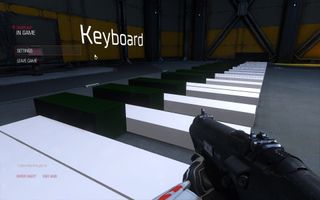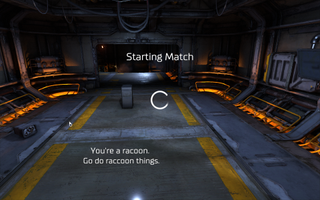
23 years after its release, people (including one of its original creators) are still modding Doom, making incredible labors of love that give the game unnaturally long life. Last week we wrote about Ancient Aliens, a Doom WAD that overhauls the classic shooter with 32 brand new, custom-made maps. Three days later, the latest game in the Doom franchise launched with a built-in level and scenario creator called SnapMap, a stand-in for true, open mod support.
As a PC gamer, SnapMap’s limitations are immensely disappointing. It has a refined, easy to use toolset and a good series of tutorials to teach you the basics, so it’s not hard to jump into SnapMap and quickly make a custom level, which is exactly the point of it. But it doesn’t give you the power to do much more. The rooms you snap together are incredibly static, pretty much only customizable by adding props or demons to them. You can’t change many character variables beyond basic stuff like health, damage, or movement speed. And there’s only a single tileset—generic, indoor Mars facility.
Despite these restrictions, the map browser is already full of custom scenarios, co-op survival levels, and recreations of iconic maps from the original Doom, most of which are a lot of fun. There are a few silly experiments, like a giant playable piano and a map called Harvest Doom, which asks you to plant and harvest ‘crops’ in what is essentially a first-person clicker game. (We would’ve prefered “Stardoom Valley.” —Ed.)

But there’s a distinct lack of the strange and surprising, and even in the best SnapMap creations, you can see the authors struggling against the program’s limits. Harvest Doom was the most creative use of SnapMap’s toolset I saw, but it wasn’t actually very fun to play since it could only stretch so far away from what SnapMap was built to do. And because you can’t import custom textures, I was stuck ‘farming’ brightly colored shapes in a Martian warehouse. No matter how hard map makers try, every map will look like the last. We’re never going to see Dark Forces reimagined. Chex Quest will never be remade in SnapMap.
And although people are doing it, it’s even a challenge to recreate the layouts of classic Doom maps, requiring the use of jerry-rigged wall props placed within SnapMap’s large empty room modules. You can approximate the layout, but it looks awkward and nothing like the source material—despite the fact that id Software itself has faithfully recreated old levels within the campaign. If your level-editor has trouble recreating a series of angular hallways made in 1993, it’s fair to say it’s limited.
Each room module is well-designed and there’s a good amount of variety to choose from but, once again, they can’t be altered in any way, and most only have two or three set snap points to which you can connect other modules—always on the sides, never on the top or bottom. You can’t stretch or squish them, meaning you’ll likely start recognizing certain modules that get used more often than others.
Another disappointing rule is that you can’t alter the physics of a level, apart from your movement speed. Tyler told me about a Quake level he once made: a silly deathmatch map that was just a very tall room with low gravity. You flew up and down trying to kill each other on the way. Doom will never have anything like that level, and that’s a real shame.
The biggest gaming news, reviews and hardware deals
Keep up to date with the most important stories and the best deals, as picked by the PC Gamer team.
MO’ BA, Mo Problems
Compared to modding, SnapMap feels downright sterile.
SnapMap’s strongest feature is its built-in coding and logic toolset. Using simple-to-understand tools, you can program AI, props, buttons, spawners, and lots more to behave in specific ways. After seeing what the toolset could do (but before I learned what it couldn’t) I was really excited to set out to make the dumbest thing I could possibly think of: a MOBA in Doom. It took me about three hours of work to realize it was impossible.
I managed to make a demon spawner that would create a Possessed Soldier every 20 seconds. That demon was programmed to be on my team, walk down a long hallway, fight any enemies in his way, and then keep walking. When he died, he dropped money that only members of the enemy team could pick up. I copied the entire spawner setup using SnapMap’s incredibly helpful shortcuts, flipped it to the other end of the hallway, set the new spawner to make demons for the other team, and then hit play and watched with pride as the two demon’s met in the middle, fought, and the winner kept walking.
Honestly, I was beaming. This was challenging for me to make work, and I was happy to see SnapMap allowed for this sort of weirdness. But then the engine had to come in and ruin it all. As the victorious demon walked further away from me, it suddenly vanished. Apparently it had reached some unchangeable demon despawn distance, and two long hallways away was too far for Doom. To make matters worse, I quickly learned that only 12 demons can be spawned into a SnapMap level at once. Suddenly, my entire concept was undermined by something I had no control over.

And this is why SnapMap, although a completely competent level-builder, pales in comparison to what modding could do for Doom. Nothing is off limits to modders. Spawn distances, gravity, textures, models, hallway sizes; these are all just variables that could be changed. It’s baffling that Bethesda—a company whose two biggest franchises are held up as pillars of the modding world—would turn its back on mod support for the revival of a game whose legacy is also built on mods.
SnapMap provides an easy way for console players to make and play custom levels in a way that modding can’t, but that sacrifice isn’t worth it. Even for console players, it’s a more limited tool than Halo’s Forge or TimeSplitters 2’s beloved mapmaker. Compared to these, SnapMap feels capable but sparse. Compared to the StarCraft 2 Arcade tool, which people are using to recreate Diablo 2, it feels shockingly restrictive. And compared to modding, SnapMap feels downright sterile.
My time making and playing levels in SnapMap mostly left me disappointed. In an ideal world, SnapMap and mod support would coexist. SnapMap is a great tool for those unfamiliar with modding or who just want to make levels for the fun of it, while the really incredible stuff would be made by the diehard modders out there. But sadly we’ve only been left with one, and I think it’s the wrong one. Unlike the original Doom’s WADs, I can’t imagine we’ll be writing a story about a cool new SnapMap level in even 6 months’ time, let alone 23 years from now.
Though SnapMap dissapoints, we've been enjoying Doom's singleplayer campaign. You can read our full review here.
Most Popular

